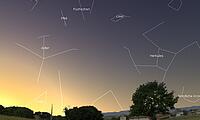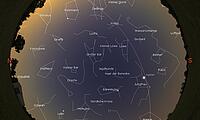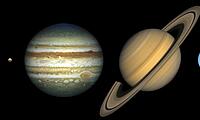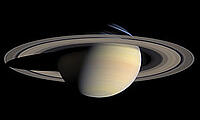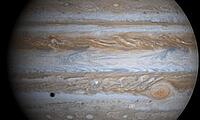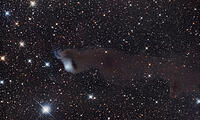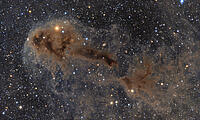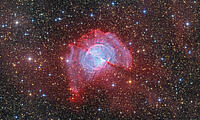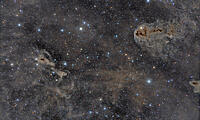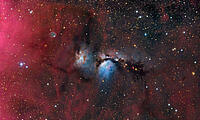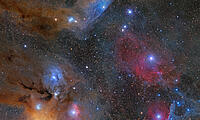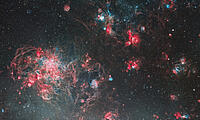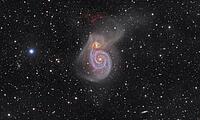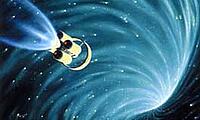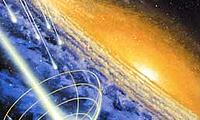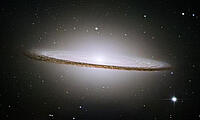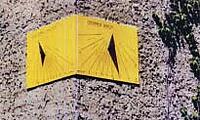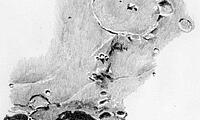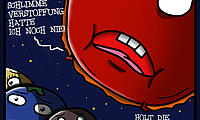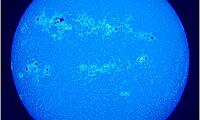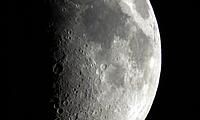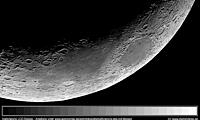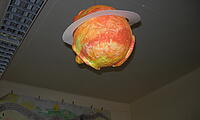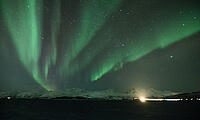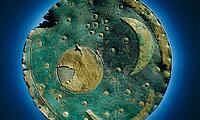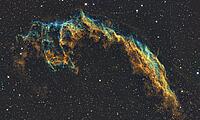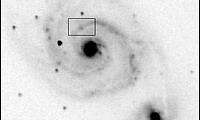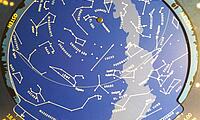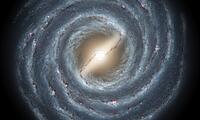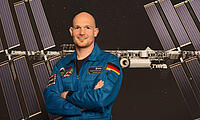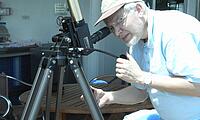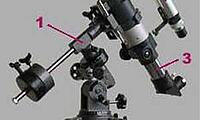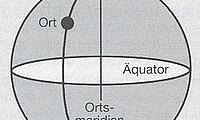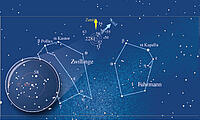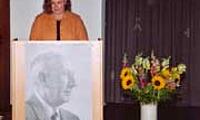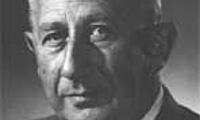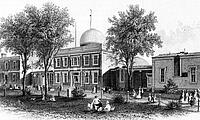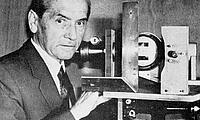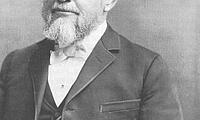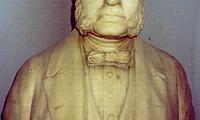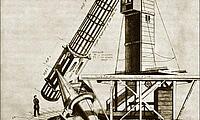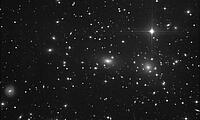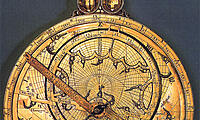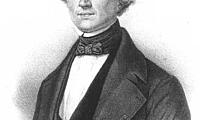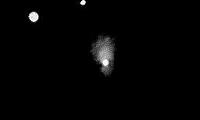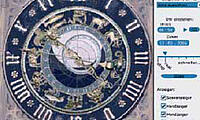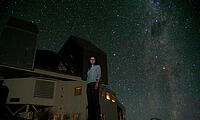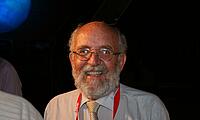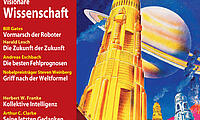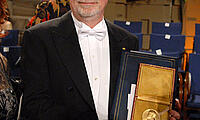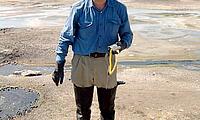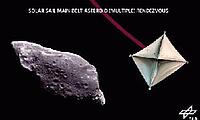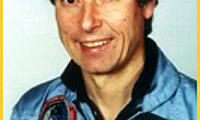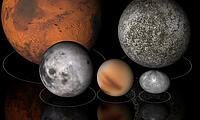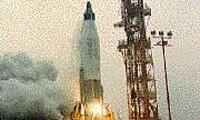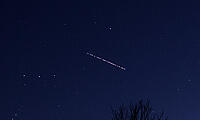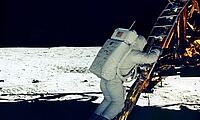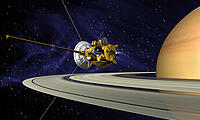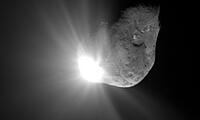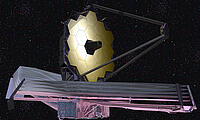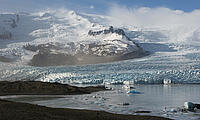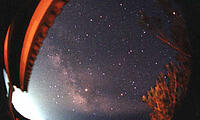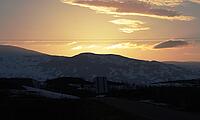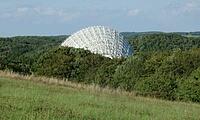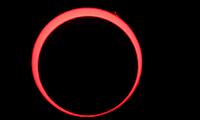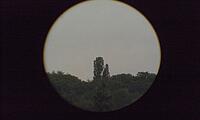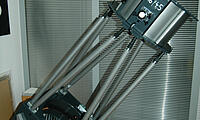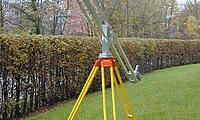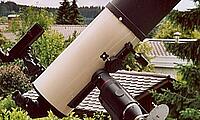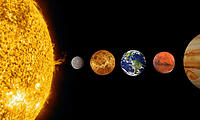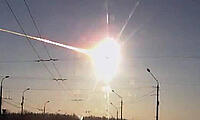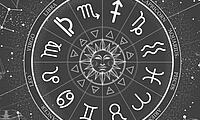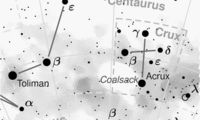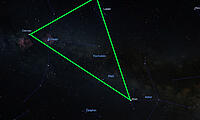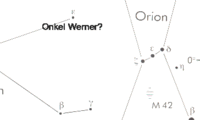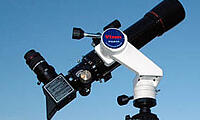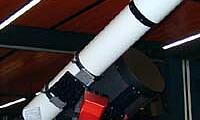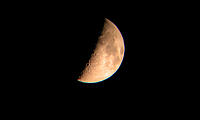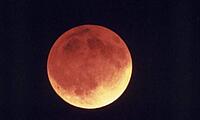Almost every star system does harbor earth-like planets
Interview von Harald Zaun, 2011
A talk with the world's most famous Planet Hunter, Michel Mayor
MICHEL G.E. MAYOR, born on 12 January 1942 in Lausanne, is a Swiss citizen. Full Professor, Department of Astronomy, University of Geneva, and Director of the Geneva Observatory (since 1998). He has taken part in and continues to contribute to the work of the international scientific community, at the European Southern Observatory (ESO, Chile) and at the Observatoire de Haute-Provence (CNRS, France), with stays at Cambridge Observatory (UK) in 1971 and at the University of the Hawaii (in 1994-1995), under taking work at the Presidency of the Commission on the galactic structure of the International Astronomical Union (IAU) (1988-1991), of the Scientific and Technical Council of the European Southern Observatory (1990-1992) and of the Swiss Society of Astrophysics and Astronomy (1990-1993). Among his recognitions, mention must be made of the 1983 Prize of the Académie Française des Sciences (Prize "Charles-Louis de Saulces de Freycinet"), the discovery of the first extrasolar planet 51 Peg b which was indicated by "Science" among the ten most important discoveries of 1995, the medal of the Commission of Bioastronomy of the International Astronomical Union (IAU) awarded during the 1997 General Assembly of Kyoto, the 1998 Prize Marcel-Benoist awarded by the Swiss Confederation, the 1998 Janssen Prize by the Astronomical Society of France and the 1998 ADION Medal by the Observatory of the Côte d'Azur (Nice, France).
In 2004 he was awarded the Albert Einstein Medal. In 2003, his latest planet searching instrument, the High Accuracy Radial Velocity Planet Searcher, came online. In 2007, he was one of eleven European scientists who discovered Gliese 581 c, the first extrasolar planet in a star's habitable zone, from the European Southern Observatory's telescope in La Silla, Chile. In 2009, Mayor and his team discovered the lightest exoplanet ever detected around a main sequence star, Gliese 581 e. By 2010 he had co-authored more than 300 scientific publications.
H. Zaun: First at all – do you still like the technical term 'Planet Hunter'? It sounds a little martial ...
Michel Mayor: Well, that is acceptable for me.
H. Zaun: Time Travel, Black Holes, Superstrings, Wormholes – all these terms seem to be very popular right now. Do you think that exoplanets do fascinate people as well?
Mayor: The general public is certainly interested in all the diversity of these new worlds but they are more interested in the question: Is there life in universe? So probably the question of exobiology is the most fascinating point for people.
H. Zaun: I conducted my last interview with you one day before 9/11. Almost ten years ago you told me that you would be very optimistic to find in the end of that decade an earth-like planet in a habitable zone. Now we got two confirmed candidates at least ...
Mayor: Yes, definitely we got two confirmed earth-like-planets in such a region. The most important one is Gliese 581d. It is the first detected terrestrial-mass exoplanet in a habitable zone. And we discovered this exoplanet with our HARPS spectrograph, which is attached to the 3.6-metre telescope of the European Southern Observatory in La Silla, Chile. I am quite confident that we are on a good way to add new exoplanets with this instrument in the coming few years. I do not know how many similar worlds we will find in future. But I expect that each year we will get one or two very interesting targets.
H. Zaun: This time HARPS was actually faster than the NASA-High-Tech-Space-Telescope Kepler?
Mayor: Regarding the detection of a huge number of low mass planets with the radius in the range of terrestrial planets Kepler is an absolutely fantastic instrument. But Kepler cannot measure the mass of these objects precisely. Therefore the NASA scientists need to confirm these objects with other instruments. By the way – as far as I know the Kepler-Team does not have any confirmed candidate in a habitable zone right now. But I am sure they will detect them. Probably they already have a list of quite interesting targets. But we are part of this game too, because we are building a slightly modified copy of HARPS (High Accuracy Radial velocity Planet Searcher) for the northern sky. HARPS II will be implemented on La Palma on the Italian telescopes GALILEO. With HARPS we never were able to confirm Keplers observations and measure the detected exoplanets, because HARPS is located on La Silla in Chile. While Kepler is observing the northern sky, HARPS on La Silla analyses the southern sky. But with a copy of HARPS we will be able, to do the follow-up measurements of Keplers candidates.
H. Zaun: When will HARPS II begin with the tracing for exoplanets?
Mayor: HARPS II will be installed on La Palma next April. It is planned that HARPS operates for several years, and in this time we will try to characterize objects in habitable zones. But we always have to keep in mind that most of the targets of Kepler are orbiting rather faint stars with 13th or 14th magnitude. To get the velocity curve due to a low mass object on a rather long period orbiting such a faint star is dramatically difficult.
H. Zaun: How many extrasolar earth-like-planets you would expect in our galaxy?
Mayor: Most of the stars should have planetary systems. It is close to 100 percent. But it is not 100 percent at all, because in some cases you may have dynamic interactions. If you have several stars forming in the same time in very dense regions like open or globular clusters – then as a result of strong interactions a star could be kicked off its system. In this case the planetary system would be lost. But the theory predicts that most of the planets in normal systems should be low-mass planets. A priori I expect that almost every system should have low-mass planets. Despite the fact that we do not know much about the frequency of this class of low mass planets in the region of the habitable zones, I would not be surprised if this fraction of planets will be huge. My guess: Almost any star system does harbor earth-like-planets. Yes, a huge number of stars should have earth-like planets. But how many of those in the habitable zone with a sufficient mass to prevent the evaporation of its atmosphere? Are we sure that these objects are moving in circular orbits? If they have too eccentric orbits, this would be not helpful for the upcoming of biological life.
H. Zaun: Recently the Radio Astronomer Jill Tarter from the SETI-Institute in California made a very optimistic prediction. She claimed that in our galaxy we might have about 50 billion earth-like-planets waiting to be detected. And 500 millions exoplanets would exist in habitable zones.
Mayor: The quoted number corresponds to a fraction of about 1% of stars with earth-like planets in the habitable zone of solar-type stars. From my point of view this prediction is not that optimistic.
H. Zaun: Is there any cooperation between the Kepler-Team and your research group?
Mayor: Yes, sure!
H. Zaun: There is no competition?
Mayor: No!
H. Zaun: What will be in your opinion the most promising earth-based telescope for Planet Hunters in the near future?
Mayor: Right now HARPS I in Chile for the southern and next year HARPS II in La Palma for the northern hemisphere, of course. And I hope that the next generation instrument ESPRESSO will become reality at ESO's Very Large Telescope on Paranal. Once installed and operating, it will 10 times more sensitive than HARPS.
H. Zaun: When HARPS II starts its operations next year, will it measure the size of Keplers exoplanets?
Mayor: Yes. We will measure the radial velocity variation of Kepler's targets to derive the mass of these planets.
H. Zaun: When will ESPRESSO start with planet hunting?
Mayor: Hopefully ESPRESSO will begin to work in five or six years. As the next extremely precise instrument, ESPRESSO will focus mainly on rocky earth-size planets. Basically it will search for earth-like planets in habitable zones as well.
H. Zaun: When will ESPRESSO start with planet hunting?
Mayor: Hopefully ESPRESSO will begin to work in five or six years. As the next extremely precise instrument, ESPRESSO will focus mainly on rocky earth-size planets. Basically it will search for earth-like planets in habitable zones as well.
H. Zaun: Where do you see the real paradigm shift in your field right now?
Mayor: One very important discovery achieved in the last two years was the discovery of a population of very low-mass objects – called super earths. They belong to that sort of planets who do not exist in the solar system, because they have masses between 1 and 10 times the mass of our Earth. The discovery of a huge population of neptune-type planets in close orbits was surprising, too. That type of planet is also unknown in our system. These are important aspects to understand the formation of this kind of objects and the formation mechanism as well. We are facing now new questions, which hopefully will be answered soon. And then probably a very important step in recent and coming years is the continuing progress in the field of analyzing the atmospheres of exoplanets.
H. Zaun: The next step would be analyzing the atmospheres of earth-like planets?
Mayor: Yes, this will be a big challenge. It already started with more massive planets and will go on.
H. Zaun: But not with the progressive and ambitious missions TPF and Darwin.
Mayor: No, both missions got completely canceled. In some sense it is sad but on the other hand it forces us to improve the earth-based technology. But I am very sure that the question of the search of possible life on other planets will be so huge a goal that it is only a question of time to place this kind of space-interferometer into orbit. Maybe in 20 or 30 years one mission like this will start. But this kind of mission concept will not be killed.
H. Zaun: What do you think about the new strategy of the SETI Scientists who focus their Radio Telescopes on the brand new planets which were detected by Kepler?
Mayor: In the situation you mentioned SETI scientists are doing a very carefully monitoring on one specific object. How big is the probability for them to find an advanced technology on such a specific object detected by Kepler? In my mind the probability of success is quite limited. The new way is different from the conventional SETI programs, because the traditional SETI experiment is looking everywhere. Normally they are not looking a priori at specific targets. I do not claim that this should not be done. But regarding this new tactic we have no way to estimate the chances. From my point of view I would estimate that the chances to be successful for one specific object are low.
H. Zaun: Do you still have close contact with scientific astrobiological groups?
Mayor: Yes, I'm still part of the "Bioastronomy Commission" of the "International Astronomical Union". And I do still participate in a few conferences worldwide. This type of interdisciplinary conferences is very useful to see the problems from different lines and point of views, to learn about other fields and to meet other researchers like here at the Starmus-Festival in Tenerife.
H. Zaun: How many high-developed extraterrestrial civilizations in universe may seek for extrasolar planets as well?
Mayor: I have no idea. I am personally extremely comfortable with the statement proposed by Christian de Duve, the Nobel prize winner in medicine. He says that life in universe is a cosmic imperative. If the conditions are correct, life should appear. Personally I love this kind of statement. It does not base on scientific data, it is just a personal feeling. Therefore I am absolutely sure that life does exist in many cosmic places and on many low mass planets. The next step must be to seek for more complex forms of life – I agree. But seeking for other technologies and civilizations, trying to communicate with them, wishing to talk with them by different means – this is to my mind too speculative. Maybe I am a little narrow-minded concerning this point. But I already would be extremely happy if we would find bacteria on Mars at least. Only one extraterrestrial microbe – this would be a huge step forward.
The interview was conducted on June 20th, 2011
ESA-Video „Astronomers Find First Earth-like Planet in Habitable Zone" mit Michel Mayor:
sciencestage.com/v/1541/astronomers-find-first-earth-like-planet-in-habitable-zone.html


[Dieses Interview liegt in einer leicht verkürzten Fassung auch in deutscher Sprache vor.
Dieser Artikel ist erschienen in www.telepolis.de
Der Autor Dr. Harald Zaun

Harald Zaun (geb. 1962) ist promovierter Historiker und studierter Philosoph mit naturwissenschaftlichem Hintergrund (Universität Köln). Er arbeitet in Köln als freiberuflicher Wissenschaftsautor und Wissenschaftshistoriker und publiziert regelmäßig mit Prof. Dr. Harald Lesch. Der zweifache internationale Bestseller-Autor hat u.a. für die WELT, Süddeutsche Zeitung, Frankfurter Rundschau, Telepolis (Heise-Verlag) u.v.a. geschrieben. Schwerpunkte: Kosmologie, Astrophysik, Raumfahrt, Wissenschaftsgeschichte und primär Astrobiologie-SETI. Sein 2010 erschienenes Buch SETI – Die wissenschaftliche Suche nach außerirdischen Zivilisationen (Heise) wurde von der Max-Planck-Gesellschaft zur Lektüre empfohlen. Sein aktuelles E-Book trägt den Titel First Contact – Spurensuche nach kosmischer Intelligenz und die Gefahren (Heise, 2013). Mitglied der Deutschen Astrobiologische Gesellschaft (DAbG). Sein neues Werk mit Prof. Lesch erscheint 2019 im Bertelsmann-Verlag.
Unser Autor würde sich über einen Besuch seiner privaten Seiten unter www.haraldzaun.de freuen!

